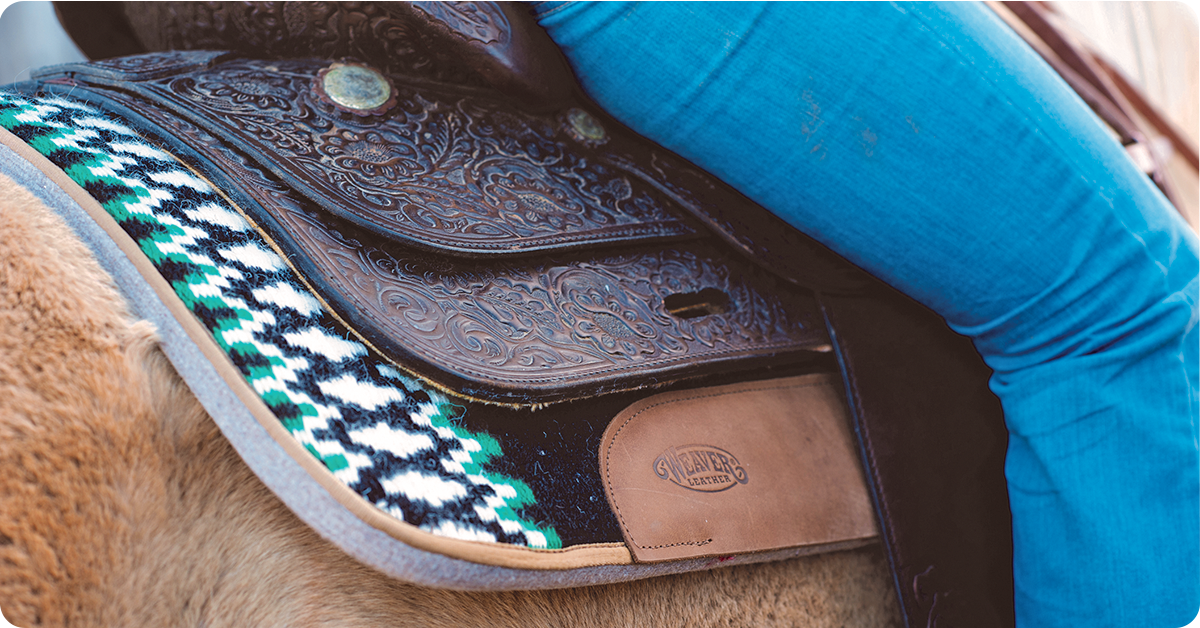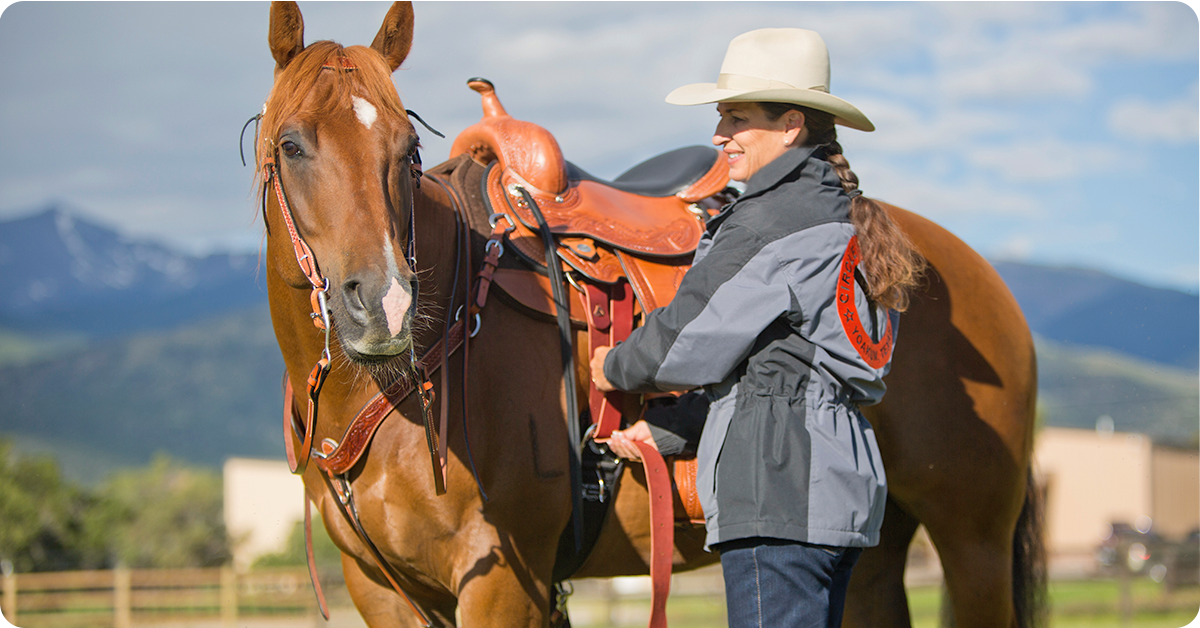
5. Search for Pinch Points
If the saddle appears snug after trying to move it, you should now search for any possible pinch points. Slide your palm between the shoulder of the horse and the saddle and feel for any pressure.
Your hand should fit easily beneath the saddle when on the horse's back while still remaining secure. Rock the saddle back and forth as well as side to side with your palm still below the saddle and take note of any pinching or discomfort that you might experience.
Any of these issues could indicate that the saddle does not fit the horse properly or that the horse may require a blanket with special padding in those tight or loose areas.
6. Look for Balance
After assessing the saddle’s fit up close you should take another broad look at how it sits on the horse. Step back and gauge whether the saddle looks even and comfortable on the horse and that it stays in the proper position.
7. Listen to The Horse
Throughout the entire process you should listen to the horse. Take note of the horse’s expressions and movements as you test out and observe the fit. If the horse pins its ears, bites, stomps or shies away when the saddle is on its back there is a good chance that the saddle does not fit properly.
Does Your Western Saddle Fit?
Knowing if your western saddle fits a horse is not always as simple as looking at the saddle itself. Sometimes a saddle can look like it has nice contact but saddle sores, poor behavior and/or even the horse’s sweat line can be tell-tale signs that you are right or wrong.
Reading Sweat Marks
Sweat marks can provide some insight into the way your saddle is fitting. After a long ride, pull your saddle and pads and look for any dry spots circled by sweat. These can indicate an area of poor contact or excessive pressure on the horse.
Dry spots could help you identify fitting problems that if not addressed, can lead to soreness, white marks or even swelling. However, not every dry spot under a saddle is cause for concern, but consider these indicators a call to action telling you to investigate possible fitting problems.
Recognizing Signs of Discomfort
A primary indicator of a poorly fit saddle is discomfort in the horse. While no horse will tell you it is uncomfortable, they communicate this message through various actions and behaviors.
If your horse fails to relax when under the saddle, has a noticeably shortened stride or even pins its ears and bites, these can all be signs of a poorly fit saddle. Some horses might even shy away while saddling due to anticipated pain from the saddle.
Noticing these signs and behavior in your horse could be a strong indicator of a poorly fit saddle.
The Role of Saddle Pads in Saddle Fit
Saddle pads play an important role in equine performance and safety when used properly. Pads function much like a sock, they are used to reduce friction from the saddle not tp “make” the saddle fit.
Choosing a thicker pad or layering pads are not solutions to a fitting problem and can actually cause a saddle to move out of position causing more harm to the horse. If your saddle is fit properly, you should only need a ¾-1” thick pad for riding.

Conformation Considerations
One exception for double padding or using contoured pads in a distinct need of a particular horse based on its conformation. If a horse is swayback or has prominent or rounded withers, you might consider adding some additional padding or using a contoured pad to put and keep the saddle in the desired position.
The key to choosing pads in these situations is achieving even contact across the horse’s back for a more even distribution of weight.
Here to Help Your Equine Partners
The ultimate goal of fitting a saddle is achieving even contact for a better experience of both horse and rider. No matter the work or style of riding you anticipate doing with your four-legged partners, IFA is here to help you both.
Your local IFA Country Store has an extensive collection of western saddles and tack to meet your various riding needs. Talk to knowledgeable IFA representatives about your riding goals and let them help you assess and find a saddle that fits for you and your horse.
Information for this article was provided by Darla Barkdull, Branch Manager, Elko IFA Country Store; Jordan Ellis, Branch Manager, Las Vegas IFA Country Store; Lindsey Hutchison, Animal Health, Tack & Farrier Dept. Manager, Riverton IFA Country Store; Tina Chamberlain, Animal Health, Tack & Farrier Dept. Manager, Cedar City IFA Country Store; and Terry Boren, Tack & Farrier Category Manager, IFA.









